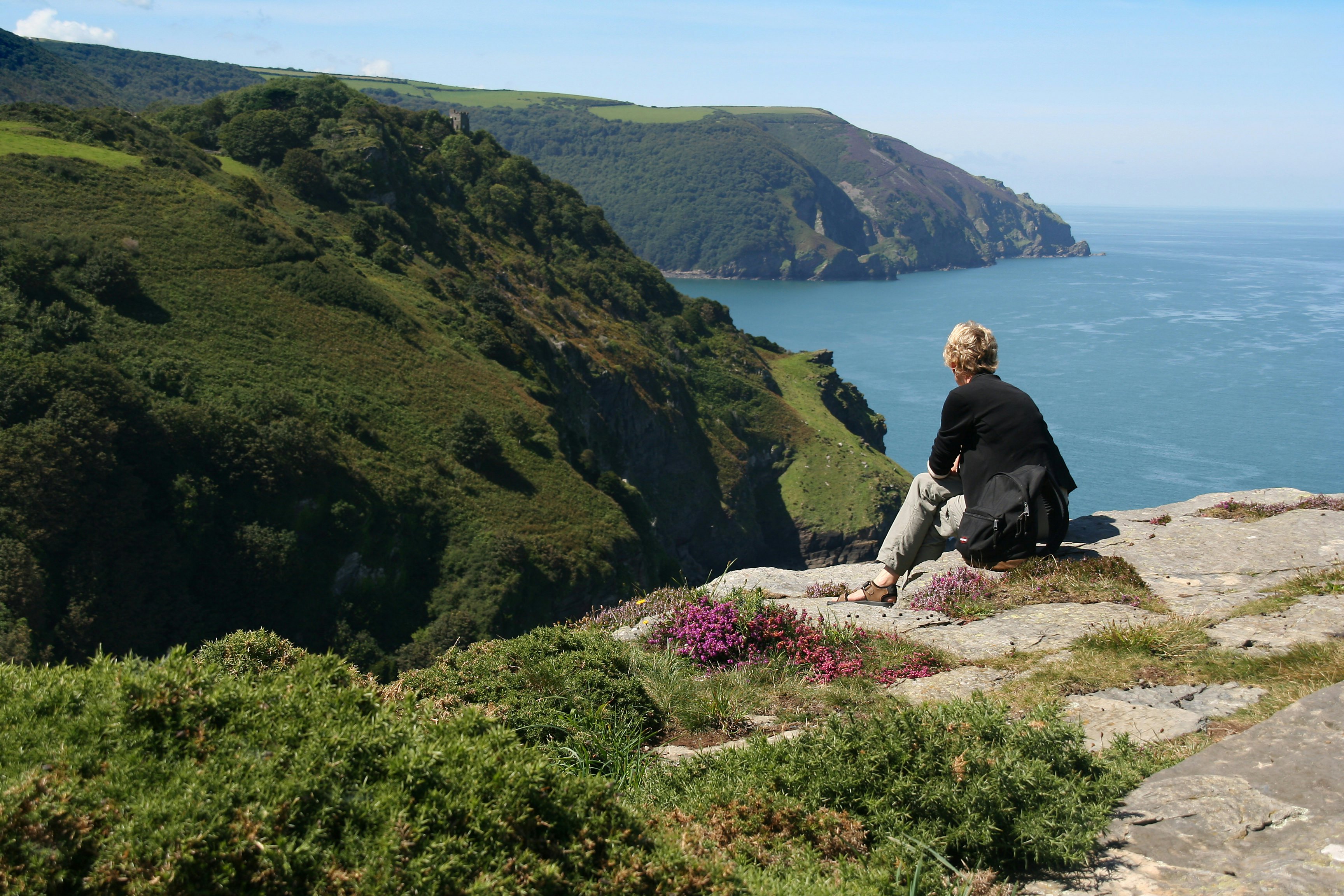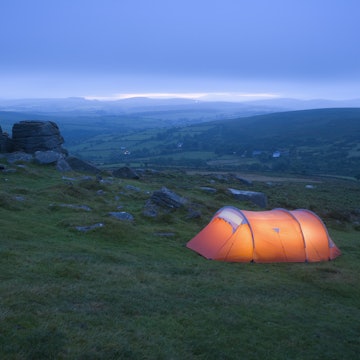
Explore the best bits of England's 10 national parks: hikes, stargazing, and wildlife

Apr 12, 2022 • 8 min read

From water sports to long countryside walks and wildlife watching, England's national parks are ideal for an active getaway © SolStock / Getty Images
With stunning chalk cliffs, ancient woodland, misty moorland, glorious lakes, and rolling green fields, England has a lot of scenery to offer, with plenty of space to clear our minds, breathe, and reconnect. Some of the best countryside falls into designated national parks that are packed with opportunities to climb, hike, ride, and bike.
From stargazing beyond our stratosphere to simply surrounding yourself with the sounds of nature, here’s what you can expect from each of England’s 10 national parks, starting with the most northerly and heading south.
Northumberland has the best historic sites and incredible stargazing opportunities
Northumberland is the least populated of England’s national parks, covering a vast 405 sq miles. Choose a walking route to meet your fitness level and keep an eye out in the woodland – this is one of the few places in England where you can still spot red squirrels. A section of Unesco-heritage listed Hadrian’s Wall – the Roman wall running coast-to-coast – goes through the south of the park.
Take a glimpse at “some of the darkest skies in the world” at Kielder Observatory, which is open year-round, for a chance to spot the Milky Way and other astronomical wonders. This park is one of the last true wildernesses in England. The best times to visit are April to May, where you're sure to see lambs, or in August when the moors turn purple with flowering heather.

The Lake District is ideal for hiking and water sports
One of Britain's most visited national parks, the Lake District is known for wonderful hill walks and water-based activities. Whether you want to go boating, paddleboarding, kayaking, or fishing, there are plenty of opportunities at the lakes, tarns, and coastline here.
The region has many literary connections too. Ever wondered what inspired Beatrix Potter to write The Tale of Peter Rabbit? Then you (and any little ones) will love connecting the surrounding landscapes with the stories at the World of Beatrix Potter. Keen to know why Wordsworth “wandered lonely as a cloud”? Then head to Wordsworth House in Cockermouth or Dove Cottage and the Wordsworth Museum in Grasmere. Lakeland has inspired these writers and many other creatives with its stunning hills and reflective lakes.
Add a whole bunch of inventive restaurants along with some lovely day spas (there are wonderful views over Windermere from the outdoor hot tub at Low Wood Bay) and it can be hard to leave. The towns get crowded in summer, so if you're not concerned about the water being that bit colder, the best time to visit is in the fall when it's less busy and the autumn colors are starting to shine.

There are incredible atmospheric views on the North York Moors
North York Moors is made up of windswept moorland, dales (valleys), and coast, which is particularly beautiful in August to September when the heather blooms. Most of the moorland is open access land, meaning you can roam away from the paths. It's best explored by car – you'll drive ridgetop roads above lush green valleys, and spot weather-beaten stone crosses that mark the routes of ancient roadways.
If you're traveling without a car, you can take the steam train from Pickering to Whitby, the UK's gothic capital, and follow walking trails that connect the stations along the route. A stop at picturesque Goathland is likely to be popular with Harry Potter fans, as it doubles as Hogsmeade Station in the movies.

The Yorkshire Dales is loved by hikers looking for a challenge
The Yorkshire Dales is one of England's best hiking and cycling areas. There are hundreds of miles of trails lined with drystone walls that lead through scenic valleys and picture-postcard villages where sheep still graze on the greens. In the limestone country of the southern Dales, you'll find England's best examples of karst scenery, caused by rainwater dissolving the underlying limestone bedrock.
The Dales are home to the popular Yorkshire Three Peaks Challenge, a walk of 24 miles that must include all three peaks, and be completed within 12 hours. Nearby is the 30-m-high Ribblehead Viaduct, an incredible piece of Victorian engineering, that carries the Settle–Carlisle train line. Visit in April to May when visitors are outnumbered by lambs.

The best national park for climbers and cavers is the Peak District
England’s first national park, the glorious Peak District is the southernmost point of the Pennines, and a popular day trip from Manchester. It has hills, valleys, moorland, and escarpments, but no actual peaks. Ancient stone villages are folded into creases in the landscape, and the hillsides are littered with rocky outcrops and stately homes, such as Chatsworth House and Haddon Hall. The Dark Peak is dominated by exposed moorland and gritstone, while to the south, the White Peak is made up of the limestone dales.
Climbers head to the gritstone outcrops of Stanage Edge or the Roaches to ascend the cliffs and boulders, and, with many underground formations, this is a popular destination for cavers too. Those that prefer to wander cave networks rather than scramble through them can join tours at the vast limestone caves of Poole’s Cavern or the mining experience at Treak Cliff Cavern.

Head to the Broads for boating and bird-watching
The Broads is a protected wetland made up of shallow lakes, coastline, and navigable windmill-lined waterways in Norfolk (and a tiny bit of Suffolk). The area is absolutely teeming with wildlife, so if you’re a keen bird-watcher, love butterflies, or are hoping to spot a seal pup, this is the national park for you.
Experience the varied habitats of reed beds, fens and marshland on a boat trip – tourist boats go out daily from towns throughout the Broads (Wroxham is a good inland base), or hire one yourself for a more hands-on experience of life on the water. This is also a top destination for kayaking, canoeing, paddleboarding, and sailing.

Follow a long-distance hiking route on the South Downs
The South Downs offers more than 600 sq miles of countryside shaped by centuries of farming. Take any of the car-free trails, bridleways, paths and even old railway lines for stunning views that stretch across the Weald and all the way to the coast. The 100-mile-long South Downs Way follows the chalk and flint ridge all the way from Winchester in the west to the seaside town of Eastbourne. The route takes around a week to complete, though by far the best section is the approach into Eastbourne along the top of the white cliffs and Beachy Head, an easy day walk.
It’s possible to access different stages of the route by public transport, hire a bike somewhere on the way, or simply sit and enjoy the landscapes that inspired writers, such as Virginia Woolf and Jane Austen. The South Downs are a delight at any time of year, though May to October is the best time for exploration.

Look out for wildlife in the New Forest
The New Forest – made up of heathland, woodland, bogs, farmland and coastline – is neither new nor totally forest. It's packed with historic sites such as Buckler's Hard, Hurst Castle, and Beaulieu, with hundreds of miles of walking and cycling trails.
But nature takes center stage here, and you're likely to see ponies, cattle or donkeys stroll casually into the road. They roam free in the Forest, let loose by commoners, who are local landowners with the right to allow their livestock to graze in the national park. In the fall, pigs are also released to clear up fallen acorns. There are five different species of deer in the park too, although they are harder to spot than the ponies. Head to Bolderwood near Lyndhurst, where you may see fallow deer from the viewing platform. Up on the heathlands, rare birds nest and many species of butterfly can be spotted. Start at the New Forest Centre in Lyndhurst, which together with nearby Brockenhurst, make good bases for exploring the area. It's even possible to visit on a day trip from London by train, although you'll wish you could stay for longer.

Exmoor, Europe's first Dark Sky Reserve, is perfect for amateur stargazers
Exmoor offers a varied landscape of rocky river valleys, desolate moorland, and coastal cliffs, where life is attuned to the rhythms and colors of the season. It's more than a little addictive, and you may not want to leave. Mountain-bikers will find a wealth of challenging tracks and bridleways to ride in the park, or enjoy some of the superb views on an on-road cycle.
With exceptional stargazing opportunities, Exmoor was Europe’s first designated Dark Sky Reserve. Download its Dark Skies Pocket Guide to help you get the most of the experience, or go to the annual festival in October. Visit the atmospheric coastal town of Porlock and the twin villages of Lynton and Lynmouth connected by a Victorian cliff railway, with Lynton at the top and Lynmouth and its pretty harbor on the shore.

Dartmoor is the best national park for camping in the wild
Dartmoor has vast moorland dotted with dramatic granite tors (outcrops or stacks of rocks, usually on a hill), and deep wooded river valleys with tinkling streams. Whilst the landscapes may seem desolate, there’s evidence of human activity in this region dating from the Bronze Age.
Outdoor activities include hiking, cycling, riding, climbing, and white-water kayaking, with plenty of rustic pubs and country-house hotels where you can hunker down when the fog rolls in. Follow one of the national park's themed walking routes to better understand the landscape, and look out for the iconic Dartmoor ponies grazing on the moors as you go. Wild camping is allowed in large parts of Dartmoor – check with the authority's handy interactive map before setting off – and whatever the activity, beware that mist and rain can descend very suddenly.
You might also like:
England’s most beautiful castles: fall under the spell of these 8 exquisite fortifications
Bards and Roman baths: best places in England
8 best hikes to discover England's beautiful countryside















